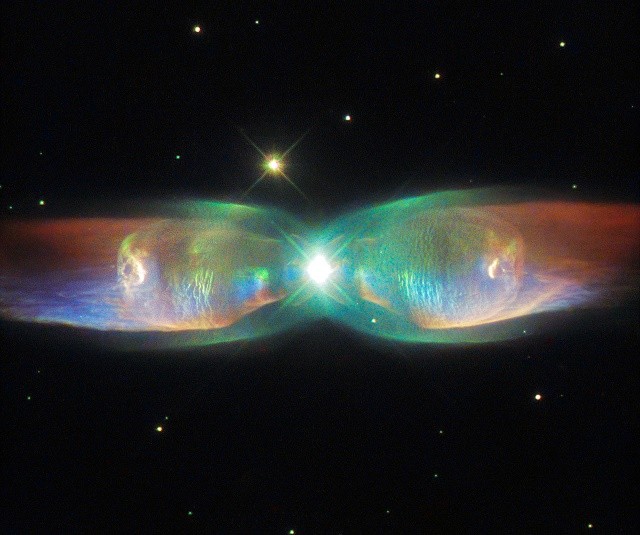NASA and the European Space Agency's Hubble Space Telescope just captured an awe inspiring image of a Twin Jet Nebula that looks like a cosmic butterfly unfurling its wings in deep space as interstellar gas enshrouding the nebula was revealed with intensive, shimmering detail.
Using the telescope's Space Telescope Imaging Spectrograph, its iridescent lobes of galactic material is viewed stretching outwards from the core of its major stellar system. The two lobes consist of colossal jets of gas that are streaming and flowing from the star system with speeds estimated to be at 620,000 miles per hour.
This "butterfly nebula" is also called PN M2-9, was discovered by a Rudolph Minkowski in 1947 where M stands for the name of the astronomer and the PN refers to its description as a planetary nebula.
This nebula is now undergoing the final stages of the life of an old star that now possesses low to intermediate mass via glowing and expanding gigantic shells of gas emanating from each side. The stars has already shed its outer layers, exposing the remnants of the core, creating luminous layers reminiscent of a cosmic rainbow.
Planetary nebulae usually possess a single star but this Twin Jet Nebula is a bipolar one which means that it consists of two stars. Astronomers have detected that the two stars in this pair also has roughly the same amount of mass as the sun which is .6 to 1 solar mass for the smaller star and 1 to 1.4 solar masses for the larger partner star.
The movement of the interstellar material between the two core stars most likely caused this butterfly wings effect. Astronomers believe that a white dwarf is in orbit of the partner star that causes gas ejections from the dying star where the stars now formed two lobes instead of a regular nebula sphere.
To date, the nebula's wings are still expanding where astronomers estimate that this nebula was only created some 1,200 years back.
Upon closer inspection, there are two blue patches that apparently represents violent activity from twin jets that are now streaming into deep space. This nebula may appear eerily mesmerizing but inside, much interstellar forces can wreak havoc.
Inside its butterfly wings and the two violent jets are rotating movements that now allows the white dwarf to suck star fuel from its larger partner star, forming a large disc of material around the the pair that can extend similar to the distance of the orbit of Pluto in our solar system, 15 times over.



























